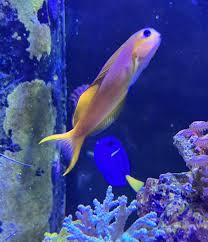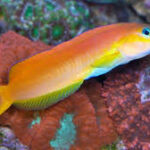The Dragon in Traditional Chinese Art Forms: A Symbol of Power, Grace, and Mysticism

The dragon is one of the most prominent and revered symbols in Chinese culture, often depicted in various forms across different artistic expressions. In Chinese tradition, the dragon is not merely a creature of myth; it is a symbol of power, strength, good fortune, and even mystical qualities that transcend the boundaries of earthly existence. From ancient pottery and sculpture to painting, embroidery, and even architectural design, the dragon has been woven into the fabric of Chinese culture for thousands of years.
This article explores how the dragon appears in traditional Chinese art forms, examining its symbolism, artistic techniques, and the diverse ways it has been represented in Chinese artistic history. Through various media, the dragon continues to inspire creativity, acting as both a subject of aesthetic beauty and a powerful symbol of spiritual and royal authority.
1. The Dragon in Traditional Chinese Painting
In traditional Chinese painting, dragons are commonly depicted in fluid, graceful movements, often set amidst clouds, water, or fire to symbolize their association with the elements. Chinese painters have historically utilized the dragon to convey themes of strength, protection, and divine power.
The classic style of Chinese painting involves brush techniques, utilizing soft and flowing brushstrokes that can capture the mythical and majestic essence of the dragon. These dragons are often shown soaring through the heavens, surrounded by swirling clouds and winds. The dragon’s shape in these artworks is elongated, serpentine, with its body often flowing like a river or stream. They are commonly depicted with five claws, a symbol reserved exclusively for the emperor, reinforcing the connection between the dragon and the royal family.
The dragon in Chinese painting is usually shown in a harmonious balance with other natural elements such as clouds, mountains, and rivers, highlighting its role as a bringer of rain, prosperity, and natural harmony. In these works, the dragon’s energy is conveyed through the fluidity of lines and color contrasts, symbolizing both the tranquility and power that the dragon embodies in Chinese culture.
2. Dragons in Chinese Sculpture and Architecture
Sculpture and architecture have long been mediums in which the dragon has been celebrated in Chinese culture. Whether carved in wood, stone, or jade, the dragon is a frequent subject in both religious and royal contexts. This symbol has a deep connection to the architectural grandeur of China’s imperial structures, temples, and shrines.
The Forbidden City, the imperial palace of Beijing, is an iconic example of dragon symbolism in architecture. Dragons are prominently featured in the palace’s design, especially in the dragon throne, which is where the emperor held court and made important decisions. These dragons are carved into columns, tiles, and beams, often arranged in a regal and dignified manner to reflect the emperor’s divine right to rule. The dragon motif is also seen on roof tiles, where dragons are depicted rising above clouds, symbolizing protection and power over the heavens and earth.
In addition to palaces and temples, religious sculptures often depict the dragon as a guardian or protector deity. These dragons can be found carved into stone altars, temple gates, and statues, where they are associated with protecting sacred sites from evil spirits and bringing prosperity to those who revere them. These dragons are often depicted as fierce and awe-inspiring, with their sharp claws and magnificent features reinforcing their status as divine creatures.
One notable example is the Longmen Grottoes in Luoyang, where dragons are carved into the rock faces surrounding Buddhist temples. These dragons symbolize spiritual guardianship and protection, often accompanying Buddha in depictions of enlightenment.
3. Dragon Motifs in Chinese Ceramics
Chinese ceramics, particularly porcelain, have long showcased the dragon as a symbol of the imperial family and nobility. The famous blue-and-white porcelain produced during the Ming and Qing dynasties often features the dragon as the central motif. The dragon is frequently paired with other auspicious symbols, such as the phoenix, clouds, and peonies, to convey prosperity, good fortune, and the harmony between heaven and earth.
The dragon-and-phoenix design is especially important in Chinese art and symbolism, representing the union of the yin (phoenix) and yang (dragon) forces, symbolizing balance and harmony in life. These pieces were often used in royal courts, and the design was considered particularly auspicious for weddings and other important ceremonies.
Blue-and-white porcelain from the Ming Dynasty, which often depicts dragons in swirling forms across vases, bowls, and dishes, has been highly regarded not only for its craftsmanship but also for the symbolism of strength and imperial power. The dragon in these ceramics is depicted with long, serpentine bodies, fierce faces, and clawed feet, emphasizing its supreme power.
4. Dragons in Chinese Embroidery and Textile Art
Chinese embroidery is one of the oldest and most highly regarded art forms in China. It has evolved over millennia, with the dragon playing a central role in traditional textile art. Dragons embroidered on silk robes, banners, and hangings were symbols of high rank and authority, especially when displayed on the garments of the emperor or imperial family.
The dragon robe (longpao) worn by the emperor during the Qing Dynasty often featured intricate embroidery with dragons, using gold and silk threads to highlight their majestic qualities. These robes were highly symbolic, and the presence of a five-clawed dragon signified that the wearer was the emperor. Similarly, robes embroidered with dragons were worn by noblemen, though these would typically feature dragons with fewer claws, such as three or four, as a sign of their lower rank.
Embroidery depicting the dragon often included other auspicious symbols, such as lotus flowers, peonies, and clouds, adding layers of meaning to the artwork. The dragon-and-phoenix motif was also common in wedding garments, representing harmony and the union of opposites.
In the southern regions of China, the tradition of silk embroidery flourished, with artisans creating intricate dragon motifs on tapestries, screens, and cushions, depicting the mythical creature in its various forms—rising through the clouds or swimming in the sea. These pieces were not only decorative but also carried a sense of cultural pride and continuity.
5. Dragons in Chinese Calligraphy
Chinese calligraphy is an art form that emphasizes the beauty of written characters, and dragons are often represented through stylized, flowing brushstrokes. Though dragons are not directly depicted in calligraphy in the same way they are in visual art, the character for dragon (龙 or 龍, pronounced “lóng”) has been used symbolically in the written word.
The character for dragon is often used in traditional poetry and prose to represent both the power of the natural world and the majestic qualities of the emperor. In some cases, calligraphers have depicted dragons in an abstract form, using strokes that convey the fluidity and grace associated with the dragon’s movement.
Calligraphers may also use the dragon in their works as a decorative element, surrounding written words with swirling clouds, water, or waves, creating an ethereal scene that connects the written word with the imagery of the dragon. This practice merges the beauty of language with the spiritual and symbolic power of the dragon.
6. Dragons in Chinese Folk Art
In addition to the formal arts, the dragon also appears in Chinese folk art, where it plays a significant role in festivals, decorations, and rituals. Dragon dances, for example, are a famous feature of Chinese New Year celebrations. During these dances, performers use long, flowing dragon costumes to symbolize good luck, fortune, and the expulsion of evil spirits.
Dragon-shaped lanterns, typically used during Lantern Festival celebrations, are also an example of folk art incorporating dragon imagery. These lanterns, which are often carried in parades or hung in public spaces, are intricately designed with vibrant colors and lights, creating an enchanting effect that brings the mythical creature to life.
In carved wood, paper-cuttings, and embroidered tapestries, the dragon continues to be a beloved motif in rural areas and among common people. These artworks, often simple and direct in their execution, serve as personal talismans of protection and good fortune.
7. Dragons in Chinese Mythology and Storytelling
Beyond visual representations, dragons are also a key element in Chinese mythology and storytelling. They are often portrayed as wise, ancient beings who possess immense powers over water, rain, and weather, all essential for a successful agricultural society. The stories of the Dragon King, ruler of the seas, and the dragon’s role in bringing rain to the land are central to many myths and legends.
In literary art, such as classical Chinese opera and novels, dragons often serve as symbols of divine intervention or the power of nature. In these stories, dragons are depicted as both protectors and challengers, embodying the virtues of wisdom, courage, and determination.
Conclusion
The dragon’s role in Chinese traditional art forms is multifaceted, deeply rooted in the cultural and spiritual beliefs of the Chinese people. As a symbol of power, protection, and prosperity, the dragon has transcended time, continuing to inspire creativity in a wide range of artistic media, from painting and sculpture to embroidery and ceramics.
As an enduring emblem of imperial authority, natural harmony, and divine power, the dragon has maintained its position as a cultural icon in Chinese art. Whether in the imperial palaces, temples, or the hands of common folk, the dragon remains a timeless symbol of China’s rich heritage, forever intertwined with the nation’s artistic and spiritual identity.

